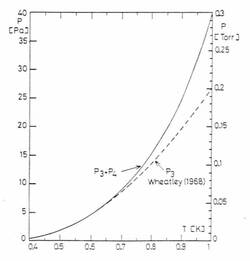This is an old revision of the document!
Table of Contents
Design and Construction of dilution refrigerators
Modern dilution refrigerator techniques are based on the La Jolla principles and methods, and the Grenoble design, described in Cryogenics books and several original articles on dilution refrigeration.
There exist many different types of dilution refrigerators, in terms of lowest working temperature and cooling power, size of the machine, and additional constraints (possibility to immerse the sample in the mixing chamber, use in a neutron or X-ray beam, in ultra-high vacuum etc.).
Classical dilution refrigerators
- Small dilution refrigerators (“la Jolla” style) have diameters of a few cm, their 3He flow rate is ~10 to 50 µmol/sec. They are often used as “inserts” in a liquid helium dewar . Due to their small size, the heat exchangers have a small total area, and heat leaks make it difficult to reach temperatures below 10 mK.
- Larger refrigerators with heat exchangers of typical diameters larger than 10 cm (“Grenoble design”) can reach temperatures on the order of 2 mK, with flow rates of 100 *mol/s. They can also provide large cooling power, with flow rates up to 10 mmol/s, obviously at higher working temperatures.
- Very large dilution refrigerators (“CERN design”) are used to cool targets in particle physics, or other high power applications.
Pulse-tube based dilution refrigerators
- Dilution refrigerators can be pre-cooled by Cryo-Coolers, thus suppressing the helium bath. These “dry fridges” are similar to those described above. The first units used Gifford Mac-Mahon coolers, but the large level of vibration end up making these machines a curiosity. When pulse-tube coolers reached temperatures below 4 K, several groups developed pulse-tube dilution units. The machine must be carefully optimized, the thermodynamics limit being very close without a 1K pot.
"1K pot" and "no 1K pot" dilution refrigerators
The design of 1K pots as well as systems pre-cooled without 1K pot (compressed 3He) are discussed in several publications:
The "still"
 The still (short for distillator), also called evaporator, is used to remove selectively 3He from the 3He-4He mixture of the refrigerator. This is typically done by pumping at pressures on the order of 10 Pa for flow rates on the order of 150 µmol/sec, easily provided by turbomolecular, roots, or diffusion pumps.
The still (short for distillator), also called evaporator, is used to remove selectively 3He from the 3He-4He mixture of the refrigerator. This is typically done by pumping at pressures on the order of 10 Pa for flow rates on the order of 150 µmol/sec, easily provided by turbomolecular, roots, or diffusion pumps.
The still operates optimally at temperatures of 0.7 K, as seen in the graph. For a given flow rate, this sets the required pumping speed, i.e. the choice of the pump. At higher pressures, the 4He contribution to the flow rate increases, creating a parasitic 4He circulation which loads the condensation stage at the refrigerator inlet. Film burners or diaphragms alleviate this problem.
The still must have a relatively large volume, typically ~3-30 cm3. The mixture level in the still can thus change, compensating for the variations in the total amount of mixture condensed inside the refrigerator. The variations arise because of changes in the condensation pressure when the flow rate is changed, for instance.
The Mixing Chamber
 mixingchamber_hg.jpg
The mixing chamber can be made out of copper, stainless steel, plastics, etc. Plastic MC are used in the presence of varying magnetic fields, to avoid eddy current heating. The MC volume is chosen typically from a few cm3 (in very small refrigerators) to several liters (very large flow rate machines). Modern refrigerators including a large sintered silver heat exchange in the mixing chamber, have volumes of about 100-400 cm3.
mixingchamber_hg.jpg
The mixing chamber can be made out of copper, stainless steel, plastics, etc. Plastic MC are used in the presence of varying magnetic fields, to avoid eddy current heating. The MC volume is chosen typically from a few cm3 (in very small refrigerators) to several liters (very large flow rate machines). Modern refrigerators including a large sintered silver heat exchange in the mixing chamber, have volumes of about 100-400 cm3.

